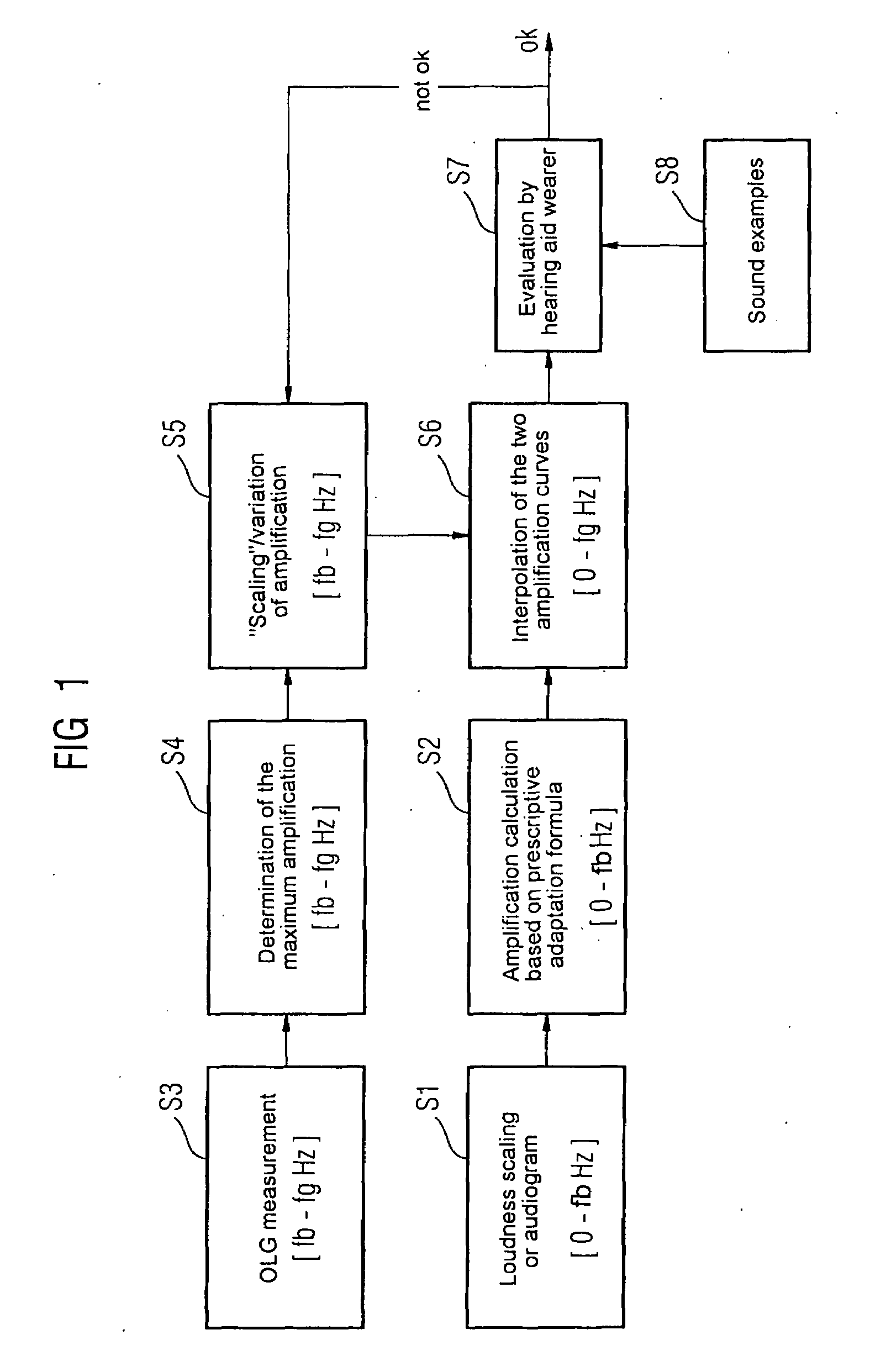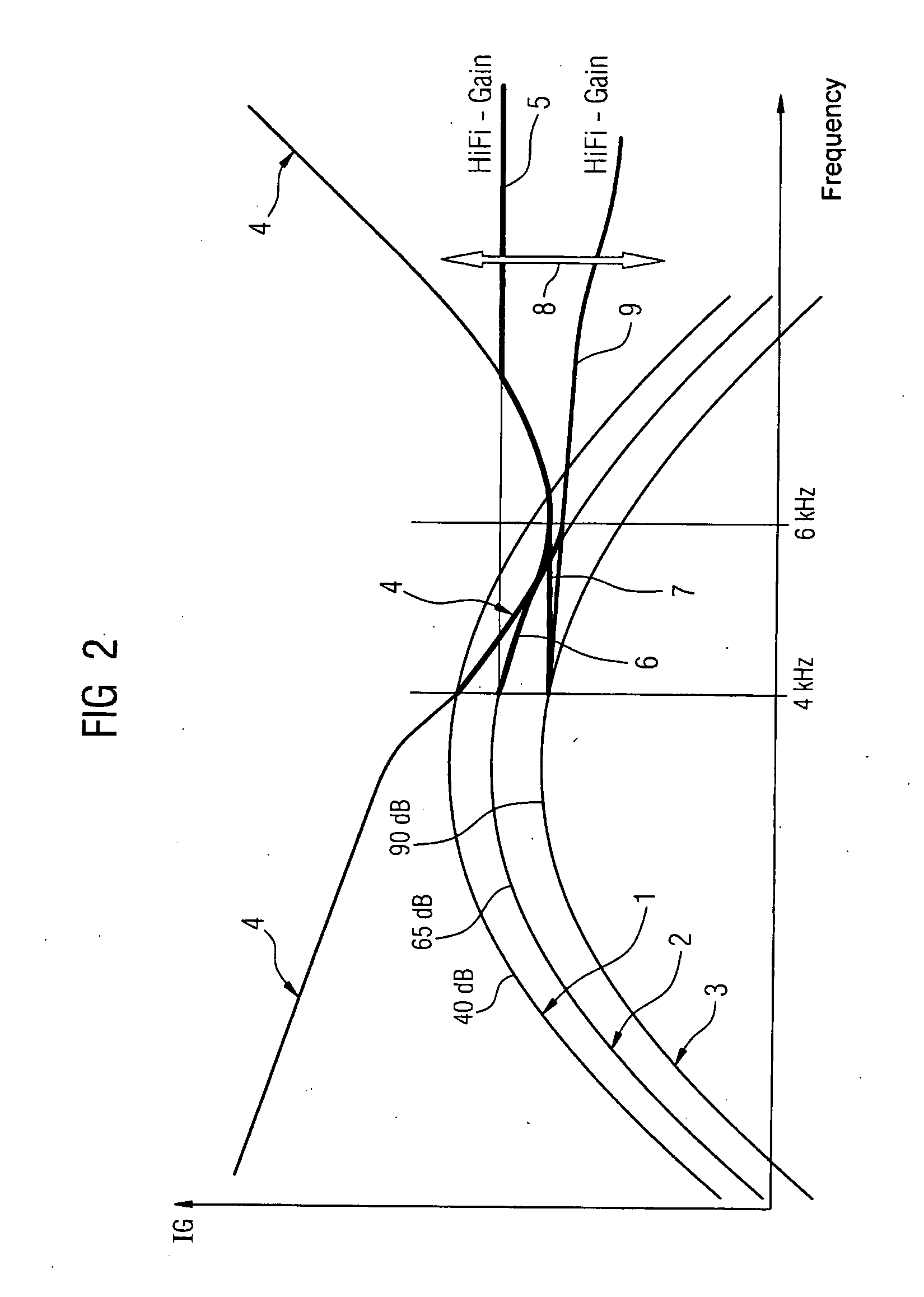Method for adjusting a hearing aid with high-frequency amplification
a technology of amplification and amplification, applied in the direction of deaf-aid sets, electric devices, etc., can solve the problems of long measuring time for loudness scaling, relatively frequent acoustic feedback, and difficult implementation of defined amplification, so as to reduce feedback susceptibility, good basic adjustment, and high spontaneous acceptance
- Summary
- Abstract
- Description
- Claims
- Application Information
AI Technical Summary
Benefits of technology
Problems solved by technology
Method used
Image
Examples
Embodiment Construction
[0024]The following exemplary embodiments described in more detail constitute preferred embodiments of the present invention.
[0025]According to FIG. 1 conventional amplification adjustment takes place first of all in the lower frequency range or in the base frequency range [0-fb] according to steps S1 and S2. For this purpose loudness impressions are recorded by a hearing aid wearer in step S1, so an amplification adjustment can be carried out on the basis of the subjectively perceived loudness. Alternatively an audiogram of the patient is taken, so the hearing threshold thereof is known.
[0026]According to step S2 the amplifications or amplification curves which are to be implemented in the hearing aid are calculated from the loudness scaling or the audiogram. For this purpose prescriptive adaptation formulae are used which, for example, are known by the names NAL-NL1, DSL-I / O. Company-specific formulae as well as a loudness normalization may also be used for the amplification calcu...
PUM
 Login to View More
Login to View More Abstract
Description
Claims
Application Information
 Login to View More
Login to View More - R&D
- Intellectual Property
- Life Sciences
- Materials
- Tech Scout
- Unparalleled Data Quality
- Higher Quality Content
- 60% Fewer Hallucinations
Browse by: Latest US Patents, China's latest patents, Technical Efficacy Thesaurus, Application Domain, Technology Topic, Popular Technical Reports.
© 2025 PatSnap. All rights reserved.Legal|Privacy policy|Modern Slavery Act Transparency Statement|Sitemap|About US| Contact US: help@patsnap.com



